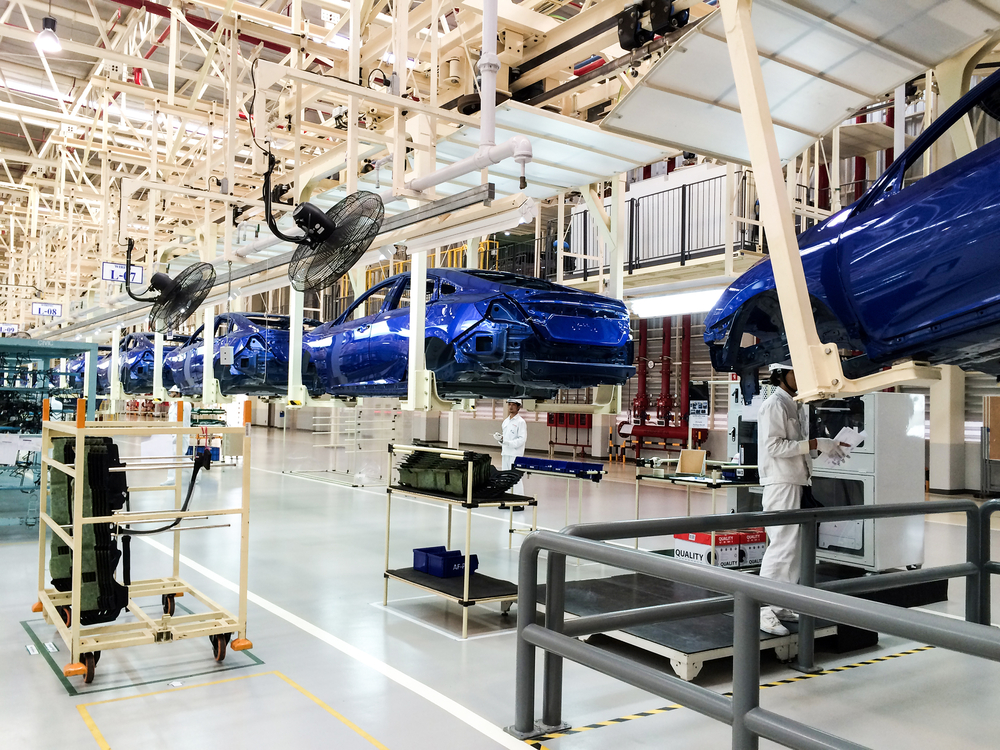SINGAPORE – The Asia-Pacific regions total lube market is expected to grow at a compound annual rate of nearly 4 percent through 2025, a Frost & Sullivan analyst said at a recent industry gathering here. Minor dips in demand due to longer-lasting motor oils will be offset by increased vehicle manufacturing.
Between 2017 and 2025, the regions lubricant industry will shift towards longer-lasting lubricants, said Shikhar Aggarwal, director of visionary sciences consulting in Singapore. While usage of lubricant per car may remain stable or drop marginally, the industry is expected to be buoyed by increasing vehicle production.
Asia-Pacific is the largest market for lubricants, accounting for close to 45 percent of global demand, he told the 11th ICIS Asian Base Oils & Lubricants Conference on May 18. It is also the fastest-growing region, with India, China and some ASEAN countries leading the rally.
In 2016, global demand for lubricants was about 42 million metric tons, according to the U.S.-headquartered consultancy. Asia consumed 19 million tons, with China slurping 29 percent of that volume. India accounted for 16 percent, ASEAN countries collectively held 13 percent, and the remaining 43 percent was distributed amongst Japan, Korea, Australia and New Zealand.
Industrial lubricants made up around 47 percent of Asias 2016 demand, followed by commercial vehicles at 31 percent and consumer automotive oils at 21 percent. By 2020, these shares will show minimal changes: Industrial lubricants will dip slightly to 46 percent and commercial vehicles to 29 percent, while consumer motor oils will increase slightly, to 22 percent.
The main drivers of industrial lubricants include increased vehicle production and rising manufacturing output, accompanied by rapid industrialization in emerging Asia-Pacific countries, Aggarwal said. The region is witnessing significant investments in manufacturing facilities across all vertical segments such as construction, automotive and steel. Yet decreases in industrial activity due to manufacturing reforms in China, for example, will check that growth.
Both factory-fill and aftermarket motor oils have been witnessing robust growth in the region, he explained. By 2020, annual vehicle production and sales will increase to about 62 million units and 54 million units, respectively, he forecasted. [This] implies that domestic demand for vehicles will outstrip the exports of automobiles to the European Union and other regions, he continued. He also noted that motorcycle engine oils are on a roll in India, Vietnam and Indonesia.
In 2016, more than half of Asias 50 million vehicles for regional sales and exports was produced in China, he continued. China is projected to continue to dominate the automotive industry, presenting opportunities for the lubricants market, he noted. Coastal China will continue to hold the lions share of the market, accounting for 75 percent of Chinas demand. Comparatively, inner regions of the country lack significant vehicle penetration, and thus have less thirst for lubricants.
Vietnam is promoting strong domestic targets for vehicle production by 2020, and this will directly impact the ASEAN countrys lubricant demand.He said that between 2017 and 2022, Vietnams compound annual growth rate for lubes is expected to be more than 5 percent.
Thailand is expected to maintain its role as ASEANs dominant automobile production hub, keeping its lubricant demand stable in coming years, he said. This will also help offset the countrys slowdown in lubricant demand, which is likely as vehicle sales slump due to the expiration of its first-car tax rebate program introduced in 2011.
Photo: Sukiyashi / Shutterstock

Asias proportion of middle-income earners within the regions total population is expected to jump from 29 percent in 2009 to 54 percent by 2020 and 66 percent by 2030. Increases in disposable income have a direct implication on vehicle purchases and, in turn, on lubricant purchases, Aggarwal said. As consumer income grows, a larger number of luxury cars will be produced in ASEAN, driving demand for synthetic lubricants.
Thailand will continue being the single largest market for synthetic lubricants in ASEAN over the next seven years, while Southeast Asias overall demand for synthetic lubricants will remain almost unchanged. Behind Thailand in terms of synthetics demand volume comes Indonesia, Malaysia and the Philippines. The other ASEAN countries require insignificant volumes in comparison.
India follows with location-specific growth, he went on. Mumbai, New Delhi and Bangalore have seen sharp rises in the use of high-end synthetic lubricants.
Although the high cost of synthetic lubricants is still a concern throughout Asia, polyalphaolefins will continue to be the predominant type of base stock used for formulations of synthetic hydraulic oils, compressor oils, transmission oils and engine oils.